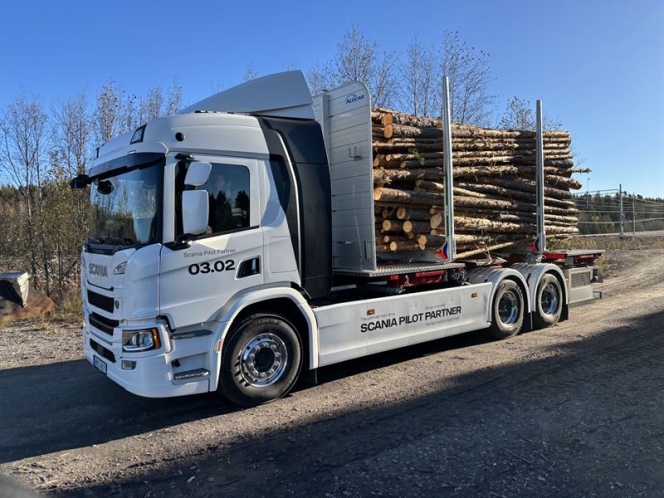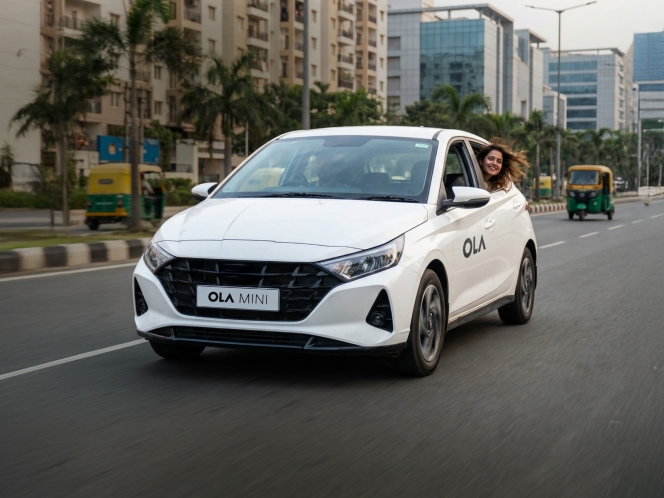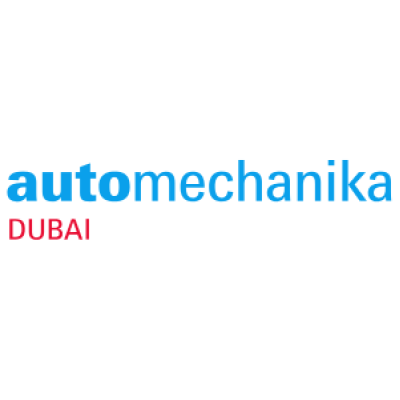
Reactions to the Union Budget 2023 have been fast and thick coming. They are appreciative of the Government’s focus on carbon-free environment. On the focus in salaried middle-class who would see a relative rise in their disposable income. If that would materialise into a rise in vehicles sales or be spent towards the high cost of groceries and other such essentials, including the school fees of their children is something that will be clear over a period of time. Time will also tell if the positive intentions of the budget will actually inspire the people of the country to fulfil their aspirations by purchasing a personal set of wheels whose cost has continued to rise and is considered by many to be today at an exorbitant level. While the higher initial acquisition cost of EVs is understandable, that of the fossil-fuel powered vehicles is getting hard to justify even if it were to be adjusted against inflation, mentioned an industry observer. Automotive prices are getting well beyond the purchasing power of a larger section of the aspiring population in India, he added. The overall ownership cost of an automobile has also risen quite some in the last two years. A major chunk of the operating costs is now accounted for by the record high fuel prices. The cost of CNG too is claimed to be high and proving detrimental to the business, according to a transporter who recently bought a few CNG trucks for its fleet in a bid to offset the high operating costs of a diesel vehicle.
Expressing that he thinks of the Union Budget 2023 to be growth-oriented, Shivaji Waghmare, CEO, Fuji Electric India Pvt Ltd, expressed that it strikes a balance between economic growth and social welfare. “It is great news that the budget has provided INR 350 billion priority capital investment towards energy transition and net zero objectives, and energy security,” he added. Appreciating the move to extend customs duty exemption to the import of capital goods and machinery required for manufacturing of lithium-ion (Li-ion) cells for batteries used in EVs, which would reduce the production cost and lower the cost of EVs, Waghmare said, “The manufacturing credit guarantee scheme for MSME is another laudable step. Youth have to be skilled to compete in Industry 4.0 and a lot of measures are being taken to make Indian youth market-ready,” he elaborated.
Mahesh Babu - Chief Executive Officer, Switch Mobility Ltd, averred, “The government’s focus on infrastructure with enhanced capex of INR 2700 billion for roads and highways and the budgetary allocation for vehicle scrappage will certainly accelerate the growth of the CV market in India. In the EV sector, the government’s move to provide customs duty exemption for import of specified capital goods and machinery required for manufacture of lithium-ion cells for batteries is a welcome move, that will play a vital role in making local cell manufacturing cost competitive in the long run.”
Kapil Shelke, Founder and CEO, TORK Motors, mentioned, “The changes in the income tax slab structure have enhanced the purchasing power of the populace. This move will encourage the adoption of cleaner, cost effective means of travel for their daily commute and the availability of FAME-II subsidy will further boost the sales of electric vehicles in the coming fiscal. Additionally, the extension on customs duty on the import of capital goods and machinery for developing lithium-ion cells would also enable EV manufacturers to localise their products in the long term, leading towards reduction in the cost of an electric vehicle for the consumer in the years to come, particularly for a brand like ours that are 95 percent indigenously manufactured in India."
Venkatram Mamillapalle, Country CEO and Managing Director, Renault India, expressed, “The Union Budget brings cheers to the automobile industry as it will positively give push to sales. The budget has laid special emphasis on vehicle scrappage policy, which will not only boost sales but will also enable in achieving clean and green environment for overall sustainable development. The customs duty exemption being extended to capital goods and machinery required for the manufacturing of lithium-ion batteries used in EVs is a boost for companies that are or would be manufacturing EVs vehicles locally. It will also help reduce the cost of EVs.”
Anirudh Bhuwalka, CEO, Blue Energy Motors, said, “The government’s focus on green mobility will provide a boost to the automobile sector and other segments which are in line with the mission to provide green solutions. The exemption on the excise duty on GST on compressed biogas and import of capital goods and machinery for batteries used in electric vehicles will propel the growth in the segment and enable industry players to further enhance their productivity. The collective efforts of the government and industry players will help the government achieve its vision to become Net-Zero by 2070.”
Nemin Vora, CEO, Odysse Electric Vehicles, mentioned, “With the budget announcement completed, we can see the emphasis on this year's budget on wider adoption of Electric Vehicles for public as well as private use. The introduction of the National Hydrogen Mission in India is a huge step towards making the country greener and more sustainable. Government's decision to increase the income tax rebate limit on personal income from INR 500,000 to INR 700,000 in the new tax regime is a welcome step for the middle-class citizens. This step is likely to help the sector as more disposable income with salaried customers may give supplementary push to demand for personal vehicles.”
Sohinder Gill, Director General, Society of Manufacturers of Electric Vehicles, averred, “After passing through a difficult period of lack of good quality” Made in India” EV components for the last 2 years, the local supply chains are beginning to take shape and the increase in customs duty on SKD/CBU is therefore timely as it will further incentivise the local suppliers because of the relative price advantage. There are still many a parts of EV componentry such as lithium cells, permanent magnets for electric motors, semiconductors, etc., that will need to be imported and we expected rationalisation of customs duty on such essential imports help keep the EV prices in check. The continuation of the customs duty-free status for machinery used to produce lithium-ion batteries could result in some stabilisation in battery pricing.”
Satyakam Arya, Managing Director and CEO, Daimler India Commercial Vehicles, said, “The FY 2023-24 Union Budget shows consistency and an intent for growth. The 33 percent increase in capex outlay underlines the fact that the budget is pro-growth and the increase is to step up on the 7 percent growth achieved in the previous fiscal. Main highlights which stood out for us as a commercial vehicles manufacturer was the eye on digitalization by leveraging 5G, which can help optimize costs and improve efficiency in the sectors it is implemented; the INR 195 billion outlay for green hydrogen development is a step in the right direction for the future of heavy-duty trucks and largely, the logistics industry; INR 350 billion for renewable energy transition projects is also an interesting initiative but how this pans out in the medium term will mark its significance; the PM Awas Yojana that is planned for boosting rural housing would create more jobs and bring more projects for the CV industry.”
Dr Anish Shah, Managing Director and CEO, Mahindra Group, expressed, “This is an outstanding budget as it is disciplined, growth-oriented, inclusive and sustainable. The steep increase in capex, to the tune of Rs 10 trillion will ensure the continuum of cyclical recovery. Capex spending is good because it has a higher multiplier effect: every Rupee spent on capex has a multiplier of INR 3 as compared to just about INR 0.9 for revenue expenditure. That apart, higher capex also creates jobs in the hinterland. The focus on core infrastructure, including increased funding for railways and clean energy, as well as the government's ambitious plans for the agricultural sector, will help to improve rural incomes. It is encouraging to see the government setting the pace for climate action by announcing a ‘green budget’ that will pave the way for a greener, cleaner planet.”
Kunal Chandra, Co-Founder, Astro Motors, mentioned, “We are pleased to see the Government's continuing efforts to stay committed to green energy initiatives, making it one of the key points in this budget. The reduction of duties on lithium-ion cells from 21 percent to 13 percent will further boost the domestic manufacturing in India and make it cheaper for Indian consumers to own electric vehicles. The Monterey support in these growth sectors will definitely increase the adoption of electric vehicles at a faster pace and help us on our journey to achieve carbon neutrality."
Santosh Iyer, Managing Director & CEO, Mercedes-Benz India, averred, “The Union Budget 2023 should drive demand as it focuses on boosting consumption by increasing the disposable income of taxpayers. Further, an increased capital expenditure on infrastructure, particularly roads, should also create demand for the automotive sector. The change in basic custom duties is however going to impact the pricing of some of our select cars like the S-Class Maybach and select CBUs like GLB and EQB, making them dearer. However, as we locally manufacture most of our models, this will not affect 95 percent of our portfolio.”
Ketan Mehta, CEO and Founder, HOP Electric Mobility, said, “A largely all-encompassing inclusive budget offers something to cheer about for all sectors; emphasis on rural development – where resides the real ‘Bharat’, and Green sustainable climate consciousness is growth focused for a bright future. The Budget will drive economic growth, create jobs and attract investments. Pushing investments in sectors such as agriculture, fishery and cattle, and supporting procurement of components for electric vehicles, and focus on clean energy and fuels like Hydrogen will significantly enhance the prospects of segments that were in need of attention.”
Of the opinion that an exceptional budget has been presented by balancing the need for sustaining rapid growth, while maintaining an eye on fiscal prudence, Vikram Gulati, Country Head and Executive Vice-President, Toyota Kirloskar Motor, said, “An outlay of INR 10 trillion towards capex which represents 3.3 percent of the GDP and a 33 percent Y-o-Y increase will definitely contribute to a robust economic growth. While doing so, the Government has aimed at a fiscal deficit target of 5.9 percent for the upcoming year with a clear glide path to bring the fiscal deficit below 4.5 per cent of GDP by 2025-26.” “The Budget which not only focuses on inclusiveness, youth empowerment and skill development, but also aims to give impetus to “Green Growth” with sufficient outlays for supporting the recently announced National Green Hydrogen Mission, doubling of allocation for FAME 2 scheme and for providing viability gap funding for Battery Energy Storage System (BESS),” he added.
- Scania
- Horse Powertrain
- SCA
- hybrid truck
- Aurobay Technologies
- Matias Giannini
- Tony Sandberg
- Ingo Scholten
Scania Selects Horse Powertrain For Range-Extender Truck Pilot In Sweden
- By MT Bureau
- December 03, 2025

Horse Powertrain has been selected by Scania to provide its range-extender system for a pilot vehicle, currently operating as a heavy-duty timber truck in Sweden. The collaboration is a step in testing hybrid powertrain solutions for demanding transport applications such as forestry logistics.
The pilot is part of the Scania Pilot Partner program and is currently operating in Sweden under SCA, one of Europe’s forestry companies.
The vehicle is built to handle Sweden’s timber routes, transporting heavy loads through remote terrain where access to charging infrastructure remains scarce. By combining a battery-electric drivetrain with the generator designed in Sweden by Horse Powertrain’s division Aurobay Technologies, the truck achieves both long-distance capability and reduced CO2 emissions.
The test route covers approximately 16 km, with an operational target of completing 7–8 rounds per day, comparable to a diesel truck.
The configuration supports the truck’s battery packs with a 120 kW range-extender unit based on Horse Powertrain’s 2.0 litre multi-fuel engine. Acting purely as an onboard charger, the unit supplies electric energy when required during long hauls, temperature extremes, or delays.
Matias Giannini, CEO, Horse Powertrain, said, "Forestry logistics represents one of the toughest challenges for electrification. The forest roads of northern Sweden demand strength, range and reliability. Charging stations are few, but the timber never waits. You can think of our range-extender as a powerbank for a heavy-duty truck: silent, efficient, and always there when you need it. By partnering with Scania and drawing on our engineering excellence, we’re proving how a compact, high-efficiency range-extender enables electric trucks to operate reliably in the most demanding environments. It’s a technology that cuts CO2 now.”
Tony Sandberg, Vice-President at Scania Pilot Partner, added, "What we’re doing in Sweden with Horse Powertrain and SCA builds directly on the 100-day trial we ran together with a logistics partner in Germany earlier this year. That vehicle logged almost 22,000 kilometres and drove more than 90 percent of the time on pure electric power, only using the range-extender when no charging was available. The result was a CO2 reduction of over 90 percent compared with a diesel truck. Those learnings give us a strong foundation as we tailor the system for demanding Nordic timber operations."
Ingo Scholten, Chief Technology Officer, Horse Powertrain and Managing Director Sweden, Aurobay Technologies division, said, “Electrifying heavy-duty routes means understanding what drivers and operators face hour by hour. Long stretches without charging, variable loads and rapidly changing weather. This pilot lets us study those realities directly in day-to-day timber operations. The range-extender’s role is simple. Provide a stable, efficient energy supply so drivers can complete their full shift without interruption and with far lower greenhouse-gas emissions than a traditional diesel truck. The data we gather here will guide how we refine the technology and scale it for wider use across demanding transport applications.”
Horse Powertrain’s modular range-extender architecture builds on the core technology used in its passenger-car and light-commercial hybrid systems, adapted for the higher power output and durability demands of heavy-duty applications. Unlike conventional fixed-speed generator sets, the engine can operate across its full power band, allowing the system to deliver the required output efficiently while keeping fuel consumption, noise and vibration low.
The pilot truck is now undergoing testing in regular operations, carrying full timber loads to gather performance and efficiency data in real-world conditions. The results will guide future deployments of electrified powertrains in the forestry sector and other heavy-duty applications.
Maruti Suzuki Launches One India, One EV Charging Platform
- By MT Bureau
- December 03, 2025
Maruti Suzuki India, the country’s largest passenger vehicle maker, is gearing up to mark its entry into the electric vehicle segment with the soon-to-be-introduced e Vitara has announced an EV ecosystem with a comprehensive end-to-end digital platform for charging needs, including home and public charging, with an integrated payment journey.
The company has signed collaboration agreements with 13 Charge Point Operators (CPOs) and aggregators to provide seamless charging experiences on a single platform.
Maruti Suzuki has established a network of over 2,000 exclusive charging points across its nationwide dealer network, spanning more than 1,100 cities. Customers’ charging needs are further supported by the extensive partner-operated all-India charging network.
Aligned with its global vision, Maruti Suzuki will work with its partners to enable more than 100,000 Public Charging Points by 2030.
Hisashi Takeuchi, Managing Director & CEO, Maruti Suzuki India, said, “At Maruti Suzuki, we strive to extend a delightful ownership experience to our customers to build lasting trust. Today, we are taking a historic step, as we enter the domain of electric mobility with full readiness to address the EV charging concerns and boost customer confidence. We have established a robust network of over 2,000 Maruti Suzuki exclusive charging points across our sales and service network, spanning more than 1,100 cities. Further, we have collaborated with 13 Charge Point Operators to offer access to a vast charging infrastructure across the country. Aligned with Suzuki’s global vision, we plan to introduce multiple EVs and to support this, our aim is to enable a network of over 1 lakh charging points across India by 2030, along with our Dealer and CPO partners.”
'E for Me' Digital Platform
The Maruti Suzuki ‘e for me’ EV charging mobile app enables end-to-end usage of EV charging points from partner-operated charging points and Maruti Suzuki’s own network on a single platform.
The app offers a uniform customer journey for EV charging and payment through UPI or exclusive ‘Maruti Suzuki Money’, powered by Razorpay.
The platform's functions include:
- Locate, Pay & Use EV charging points available on the app.
- Use Public and Smart Home Charger from the same app.
- One card for ‘Tap N Charge’ functionality at Maruti Suzuki dealer outlets and home charger.
- Mirror e for me app on the infotainment system for seamless in-car EV charging experience.
- Remotely start/stop and manage the power output of the smart home charger.
Partho Banerjee, Senior Executive Officer, Marketing & Sales, Maruti Suzuki India, said, “Today is the dawn of a new era for electric mobility in India. It gives me immense pleasure to say that Maruti Suzuki is EV ready and will be ‘By Your Side’ with our comprehensive new platform that addresses key concerns around EV charging infrastructure. Leveraging India’s largest dealer network and our charging partners’ network, we are ensuring there are EV charging points at an average distance of 5-10 kilometres at key locations in the top 100 cities of India. DC fast chargers are also located at regular intervals along key highways to enable nationwide driving freedom for our prospective EV customers. To further enhance peace of mind, we have deployed a 1.5 lakh-strong specially-trained EV workforce to cater to every need of our customers. We have also activated 1500+ EV-ready service workshops across 1100 cities for meeting after-sales requirements to support EV ownership in every part of the country.”
To showcase the network readiness, four e VITARAs were flagged off from Gurugram in all four directions – Srinagar (North), Kanyakumari (South), Bhuj (West) and Dibrugarh (East) – as a part of the ‘e drive’.
The e Vitara Born EV, which is ‘Made-in-India and exported around the world,’ has been rigorously tested over 10 million test kilometres. Tested from ‘Sand to Snow’ over a temperature spectrum of 60deg Celsius to -30deg Celsius, the e Vitara has delivered a driving range of 543 km.
Banerjee added: “Words aside, we are showcasing the prowess of this platform by flagging off a radical ‘e drive’ that will demonstrate the real-world efficacy of Maruti Suzuki’s comprehensive EV charging network. With the ‘e drive’, we aim to boost user confidence and execute faster EV adoption, working alongside the nation’s sustainability goals for net zero.”
Ola Intros Non-AC Cab Options On Its Platform Across India
- By MT Bureau
- December 02, 2025

Bengaluru-based ride-hailing company Ola Consumer has launched its non-AC ride category across India, becoming the only player in the country to offer this option at scale.
The company stated that the goal is to offer customers maximum choice across various price points to meet their travel needs. The new category will also enable cab drivers to have lower fuel consumption and improve their earnings.
Ola Consumer spokesperson said: “With the non-AC category, we’re pushing the boundaries of how affordable and accessible urban mobility can be in India. Millions of people rely on daily, value-driven transport, and this offering is built entirely around their needs. The early response has been incredible and shows how strongly India wants more transparent, flexible, and fairly priced mobility. This move marks a step ahead in our mission to rethink mobility in India, and make it truly inclusive for every consumer.”
- Synopsys
- 3D Engineering
- Ansys
- MCCIA Electronic Cluster Foundation
- MECF
- Mike Yeager
- Murali Pullela
- Shrikrishna Gadgil
- Ajay Deshkar
Synopsys And 3D Engineering Open Design Center In Pune
- By MT Bureau
- December 02, 2025

Synopsys, in association with 3D Engineering (an Ansys Elite Channel Partner), has inaugurated a new Design Center for Engineering Simulation at the MCCIA Electronic Cluster Foundation (MECF) in Pune.
The facility aims to accelerate access to advanced simulation technologies for MSMEs and be a catalyst for industrial R&D in Tier 2 and Tier 3 cities, industry-academia collaboration and student training.
The Design Center will enhance simulation-led innovation and adoption in electronic product design engineering for MSMEs in automotive, aerospace and defence, electronics and healthcare.
The facility will provide hands-on access to engineering tools in structural analysis, thermal modelling, electromagnetics and digital twin technologies. It is equipped with licensed Ansys (now part of Synopsys) simulation platforms and a high-performance computing (HPC) infrastructure.
The MECF facility is one of the Common Facility Centers (CFCs) approved by the Ministry of Electronics and Information Technology (MeitY), valued at INR 710 million. MECF is promoted by the Mahratta Chamber of Commerce, Industries and Agriculture (MCCIA).
This initiative aligns with India's goals under 'Make in India' and 'Skill India' by enabling simulation-led R&D, accelerating time-to-market for local manufacturing innovations and building a talent pipeline trained in engineering challenges.
It will serve as a dual-purpose hub for skill development and industry consultancy, offering design, simulation services and hands-on training. It will also bridge the cost and resource gap for smaller enterprises by offering discounted access to design tools and expert support.
Mike Yeager, Area Vice-President, Synopsys, said, “Simulation is a foundation of modern engineering, and we believe in making these powerful tools accessible everywhere in India. Our collaboration with 3D Engineering and MECF, supported by the Ministry of Electronics and Information Technology (MeitY), will empower students, startups, and SMEs to leapfrog into next-generation design and innovation.”
Murali Pullela, Area Sales Director, Synopsys, said, “Our collaboration with MECF reflects the company's commitment to empower innovation from silicon-to-systems. By equipping the design center with advanced engineering tools, India’s electronics ecosystem can be strengthened, accelerating product development aligned with global standards.”
Shrikrishna Gadgil, CEO, MECF, said, “MECF helps the industry in their product development cycle from design to certification, which will support the electronics ecosystem in the region. Our vision is to make the region vibrant with innovation, fostering new products and technologies, and establishing it as a hub for futuristic products and a center of technology excellence. We’re committed to bringing world-class technology and infrastructure closer to grassroots engineering talent. For us, this Design Center by 3D Engineering with Synopsys, as the principal partner is not just an investment in infrastructure, but also an investment in people, capability-building, and future innovation.”
Ajay Deshkar, Managing Partner, 3D Engineering, said, “As a long-standing Ansys Channel Partner, we at 3D Engineering are proud to enable this ecosystem where cutting-edge simulation technology meets local ingenuity. This Design Center is a model for how industry partnerships can meaningfully drive regional innovation and contribute to India’s technological self-reliance.”






Comments (0)
ADD COMMENT